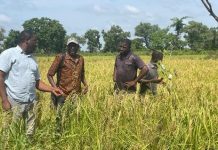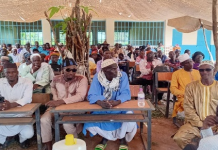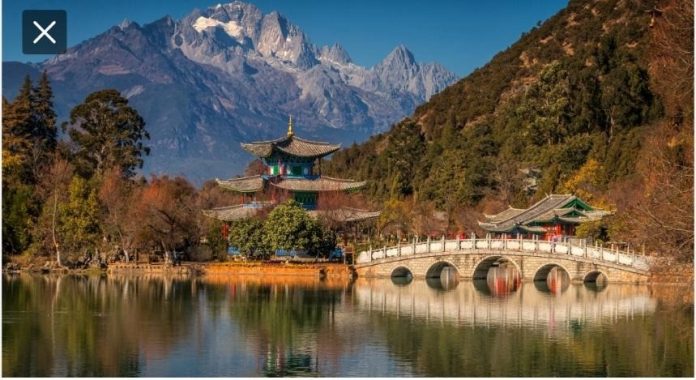By Ndey Sowe, Reporting from China
Pu’er City in Yunnan Province stands out as one of the most ecologically intact and biodiverse oases along the Tropic of Cancer. Renowned as the “Heaven-Sent Pu’er World Tea Origin” and “China’s Coffee Capital,” the city is the birthplace of the ancient Tea Horse Road and the first monument to ethnic unity in New China. It was also the first city in China approved to establish a National Green Economy Pilot Demonstration Zone.
Pu’er has earned numerous national titles, including “National Civilized City,” “National Demonstration City for Ethnic Unity and Progress,” and “National Double Support Model City.”
Covering an area of 45,000 square kilometers, Pu’er borders Vietnam, Laos, and Myanmar, with three ports and seven border crossings. Its unique geographical advantage, “one city linking three countries, one river connecting five neighbors”, makes it a strategic hub in Yunnan’s efforts to become a regional center for South and Southeast Asia.
The city administers nine counties and one district, with 103 townships. By the end of 2024, Pu’er had a population of 2.337 million, of which 1.305 million were residents. Home to 26 ethnic groups, ethnic minorities make up 61 percent of the total population.
According to Zhou Dakun, Deputy Director of the Agriculture and Rural Affairs Bureau of Pu’er City, the city once faced severe poverty challenges. “In the past, Pu’er suffered from poor transportation, limited access to information, a single industrial structure, frequent natural disasters, and dilapidated housing,” he said.
Nine of its ten counties were classified as impoverished, with Lancang and Jiangcheng being among the most affected. Out of 761 impoverished villages, 295 were considered deeply impoverished. The city is home to five ethnic groups, Lahu, Wa, Yao, Blang, and Lisu, that transitioned directly from primitive society to socialism. In 2012, Pu’er’s poverty rate stood at 30.4 percent, making it one of the main battlegrounds in Yunnan’s fight against poverty.
Through extensive efforts, by the end of 2020, all nine impoverished counties in Pu’er had been lifted out of poverty. All 761 impoverished villages were delisted, and 605,200 people were no longer classified as poor. This achievement marked the eradication of absolute poverty, an issue that persisted for centuries.
The city’s infrastructure has seen significant improvement. All administrative villages are now connected by hardened roads, and public transportation coverage has reached 100 percent. Every village has access to electricity, with a “one-household-one-meter” system fully implemented. Postal and e-commerce services now cover all city and county levels, while 63 percent of villages have local e-commerce service points.
Pu’er has prioritized education to break the cycle of poverty. The consolidation rate of compulsory education has reached 94.95 percent, with full implementation of policies supporting students from preschool to university.
In healthcare, every county-level public hospital, township health center, and village clinic meets national construction standards, ensuring that each village has at least one licensed doctor. All impoverished residents are covered by basic and critical illness insurance.
Housing improvement programs have also transformed rural life. A total of 144,800 rural houses were renovated, including 92,400 belonging to the most vulnerable groups. The project aimed to ensure homes were “safe, solid, weatherproof, and rainproof.” Similarly, the rural water supply system has achieved 100 percent coverage, ensuring safe drinking water for all 2.03 million rural residents.
Pu’er has directed substantial financial resources toward deeply impoverished areas. Since 2016, a total of 5.65 billion yuan in special poverty alleviation and agricultural funds has been allocated to Lancang and Jiangcheng counties, 36 percent of the city’s total. Additionally, Shanghai provided 371 million yuan in assistance, while the Huaneng Group contributed 1.35 billion yuan to support the Lahu and Wa ethnic communities in Lancang.
“The fight against poverty has been a major test of our cadres’ performance, work style, and Party spirit,” Zhou said, crediting the success to the leadership of the Communist Party of China (CPC), the guidance of President Xi Jinping, and the support from provincial and central authorities.
The year 2025 marks the final year of the “transition period” to align poverty alleviation gains with rural revitalization. Pu’er City plans to fully implement President Xi Jinping’s directives on agriculture and rural development.
“We will continue to act with determination and take practical measures to ensure no large-scale relapse into poverty,” Zhou affirmed.
Nestled in the mountains of southwest Yunnan, Pu’er, where 98.3 percent of the terrain is mountainous, remains the province’s largest prefecture-level administrative unit. From its rich tea culture to its remarkable journey out of poverty, Pu’er stands today as a symbol of China’s green growth, ethnic unity, and rural transformation.


















